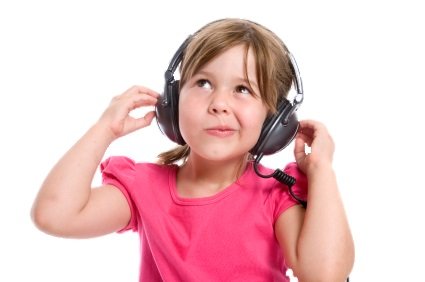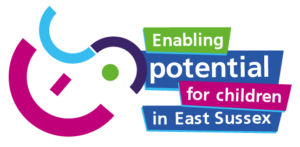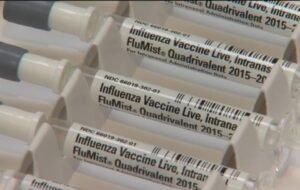Background:
 Our established national newborn hearing screening is well respected and has led to great improvements in the early diagnosis and management of children with hearing loss. However we also know that it only picks up about half of the permanent hearing losses present at around 5 years of age. In order for children to fulfil their potential in education it is important that we identify and manage hearing loss in all these children at this critical age. The school entry hearing screening seems an appropriate system to ensure detection of those hearing losses.
Our established national newborn hearing screening is well respected and has led to great improvements in the early diagnosis and management of children with hearing loss. However we also know that it only picks up about half of the permanent hearing losses present at around 5 years of age. In order for children to fulfil their potential in education it is important that we identify and manage hearing loss in all these children at this critical age. The school entry hearing screening seems an appropriate system to ensure detection of those hearing losses.
In 2007 the Health Technology Assessment on “Current practice, accuracy, effectiveness and cost-effectiveness of the school entry hearing screen” Vol. 11: No.32 stated that:
- Just over 10% of services are no longer providing hearing screening at school entry.
- Coverage and referral rates are variable.
- Test techniques and protocols were very variable and tests are often done in poor listening conditions.
- There is no national approach to data collection or audit and quality assurance, and there are variable approaches at local level.
- Approx 1.89/1000 children have an acquired or progressive permanent deafness that requires identification after the newborn screen. 80% of these children could be identified using targeted screening if appropriate protocols, services and professional vigilance are in place. However, 20% (0.37/1000) of all permanent impairments may be missed without SEHS or reactive referral.
- SEHS was found to be cost-effective when compared to not having SEHS or using other types of hearing screen.
The Department of Health published in 2008 “The Child Health Promotion Programme”. On page 56 it stated that, “By five years – to be completed soon after school entry …
- Hearing screening should be carried out using an agreed, quality-assured protocol in appropriate surroundings. Parental concern about hearing should always be noted and acted upon.
- Screen all children for visual impairment between four and five years of age. This should be conducted either by orthoptists or by professionals trained and supported by orthoptists. …”
The National Deaf Children Society published their position statement in response to the above documents in February 2010. They confirmed that, …
in areas of the UK which have school entry screening NDCS shall:
- oppose any proposal to cease school entry screening unless it can be demonstrated that it will be replaced by more effective screening processes
- seek assurances about the quality of the screening programme, including asking for details of the numbers of children identified by school entry screening and what happens to the data
- ask that services should work to improve the quality of their screening programmes and implement audit of screening performance.
… in areas that do not have school entry screening NDCS shall:
- urge for the introduction of an effective way of screening the child population
- ask what processes the health service has in place to ensure children are given prompt hearing assessment – e.g. do they offer open referral for parents concerned about hearing, do they have targeted screening for ‘at risk’ groups
- ask that whenever SES is re-introduced this is done with robust protocols, data collection and audit processes in place.
 In August 2012 another Health Technology Assessment [HTA 10/63/03] was started to look at the “The diagnostic accuracy of school hearing screening tests and cost-effectiveness of school entry hearing screening programmes“. The publication of this is awaited for January 2016 [ http://www.nets.nihr.ac.uk/projects/hta/106303 ].
In August 2012 another Health Technology Assessment [HTA 10/63/03] was started to look at the “The diagnostic accuracy of school hearing screening tests and cost-effectiveness of school entry hearing screening programmes“. The publication of this is awaited for January 2016 [ http://www.nets.nihr.ac.uk/projects/hta/106303 ].
In the meantime time many services have tried to maintain and improve their SEHS against dwindling resources and difficulties working across boundaries. Some areas even saw their school entry hearing screening discontinued.
How it started:
In Barnet, North Central London, the paediatric audiology team had been training primary care trust school nurses to perform the school entry hearing screening and provided annual updates to ensure quality training. The workforce was relatively stable and local. However no formal assessment of the screening quality existed and data were not monitored. The quality control was limited.
From 2005 on a school entry vision screening program was planed and a computer based solution for the school entry vision screening considered. The PCT primary care team and the paediatric audiology team being co-located initially met for tea and coffee conversations in the kitchen. Out of this was born a cooperation to combine the vision and hearing screening at school entry. Foremost, so children had to be taken out of class only once for both screenings. We also knew that children with hearing loss are more likely to have some vision problem and vice versa. So we created a common pathway for both.
Professor David Thomson (Department of Optometry and Visual Science, City University) developed and then established with the Barnet community based orthoptists a laptop based vision screening. This allowed data to be collated automatically, stored and converted into computer generated letters.
At the time I considered the significant amount of time required to train and maintain high quality skills in those performing the hearing screening using a standard manual audiometer to be too high and that the requirement for manual recording and transmission of hearing data would not be the best use of resources in the future. I also wanted a hearing screening system that provided more robust, effective and easily auditable data. This meant I needed an automated hearing screening system suitable for children at school entry.
How SchoolScreener® developed:
The first step on the path was to allow the manually obtained hearing screening data to be entered into the laptop database of the school children. We created a manual input screen. As everybody was using standard audiometers performing manual screening this was a useful addition.
 When the national school entry height and weight program came into practice I made sure these could be included in the database through a data entry screen. The reason for this was that Professor Marie-Louise Barrenäs just published her findings on weight and sensorineural hearing loss. Having the data sitting alongside each for each pupil would allow to link these two once a large number of data is collected.
When the national school entry height and weight program came into practice I made sure these could be included in the database through a data entry screen. The reason for this was that Professor Marie-Louise Barrenäs just published her findings on weight and sensorineural hearing loss. Having the data sitting alongside each for each pupil would allow to link these two once a large number of data is collected.
What followed was to create a laptop based hearing screening tool. This should remove the need for manual transcription of data, but should transfer any recorded data automatically and to be stored in the database against the pupils data, linked to the vision data as well. So it happened at the time that the Institute for Hearing Research (IHR) in Nottingham had just developed the IMAP for auditory processing disorder testing. A tool that carried the potential to be used for exactly my need. Dr Sally Hind already explored options for the IMAP to be used for hearing assessments and named it PlayMe.
 PlayMe used the IMAP screen and response system and sounds were generated through the laptop and presented through headphones. We worked on it further so it could be incorporated with the vision screener, but intellectual property concerns and difficulties with changes to the software became a problem. We decided to use it as a standalone version. From the first prototype some further changes were required and BAPA kindly awarded me with their annual prize the opportunity do further work on it, thus supporting this development. Funding from the British Society of Audiology was successfully obtained to fund the initial testing with children in the clinic situation. Unfortunately reorganisation at Dr Sally Hind’s unit at the IHR delayed this progress and when she shortly after retired all IHR researchers were too busy with their projects to progress this work further. Without the IHRs support I could not progress on my own.
PlayMe used the IMAP screen and response system and sounds were generated through the laptop and presented through headphones. We worked on it further so it could be incorporated with the vision screener, but intellectual property concerns and difficulties with changes to the software became a problem. We decided to use it as a standalone version. From the first prototype some further changes were required and BAPA kindly awarded me with their annual prize the opportunity do further work on it, thus supporting this development. Funding from the British Society of Audiology was successfully obtained to fund the initial testing with children in the clinic situation. Unfortunately reorganisation at Dr Sally Hind’s unit at the IHR delayed this progress and when she shortly after retired all IHR researchers were too busy with their projects to progress this work further. Without the IHRs support I could not progress on my own.
When another year had passed it was time to pursue another avenue.
All along I had been working with Professor David Thomson (Department of Optometry and Visual Science, City University). He was fully supportive of developing a new custom-designed integrated system for hearing screening. The current SchoolScreener® was born, offering hearing, vision and BMI screening in one unit.
We already had the manual input screen for the hearing screening data that we designed a couple of years earlier and it worked well for those using their standard audiometers performing manual screening.
It worked well, but it still required screeners trained to perform sweep audiometry. A time consuming task and reliant on highly qualified school nurses rather than Health Care Assistants [HCA] or school screeners. The only way to move to HCA screening was to develop an automated version that captured the child’s attention and collected the responses automatically.
We decided to use three characters appearing one after another. One character would be making a sound, the other two not and the child had to point which one produced the sound. In order to reduce the likelihood of guessing each frequency is presented at least twice per ear. Later on we also introduced intermittent no-sound events with a no-sound symbol on the screen. Counting false positive responses allows us to detect children who guess and need referral to paediatric audiology services for manual paediatric audiometry.
The sound is presented through Sennheiser HD300 (now HD200) headphones which have excellent noise attenuation properties; a very important feature for screening in school environments.
The headphone is hard wired into a small mobile phone-sized audiometer that plugs into the USB-port of the laptop. This is unique to this system and developed for it. The headphones and the audiometer are calibrated as one unit. The whole unit is powered through the USB port of the laptop and can be exchanged against another set within seconds without the need to change the laptop or major calibration. The screener can immediately continue with the screening process.
All screening results are automatically stored with the child’s record on the encrypted system. An NHS approved secure wireless transmission to a central server synchronises the data on the press of a button and allows a personalised computer generated letter to be sent to the paediatric audiology department, the parents, GP and others. The second tier clinic can access the screening data and referrals through a web portal or directly imported into AuditBase. The paediatric audiology department can also then input those cases clearly identified with a hearing loss. This closes the audit loop of the process.
Summary reports per screener, school, area or part thereof can be generated on request. This gives opportunities to identify problem areas and those that might need further help.
Since the first department went live with this in London in 2014 the program continuously develops further. The early adopters have been able to shape the program and every new borough providing feedback allows me to develop the system such that it is a truly clinically driven tool that helps people to provide better services.
The hearing module is now working well and removes the screener’s bias but can take longer than the conventional manual sweep audiometry. The winning savings are in the time required around it (e.g. pupil data are electronically uploaded if provided by the local authority) and the quality of the data recording and its audit capability. The reduction of training needs is considerable.
The audit loop closes if secondary care enters their data via a web browser and unique ID. All data can also be imported into AuditBase for those services using it.
As the test time takes slightly longer than with conventional sweep audiometry I am now developing a different paradigm that should reduce the required testing time and consider the individuals response delay.
It has been a long time since I have started working on this project, but it is still growing and new ideas are waiting to be worked on.
The BAPA research prize has been very helpful in getting this progressed despite the obstacles encountered. Without small funds like this some work would not be possible.
So, thank you BAPA
Dr Sebastian Hendricks
Consultant Audiovestibular Physician & Paediatrician
Clinical Lead for Paediatric Audiology & Audiovestibular Medicine, Royal Free London NHS Foundation Trust
Consultant Paediatric Audiovestibular Medicine, Royal National Throat Nose & Ear Hospital, University College London NHS Foundation Hospitals
Literature:
The Child Health Promotion Programme, DfES & DH, 2008
http://webarchive.nationalarchives.gov.uk/20130401151715/http://www.education.gov.uk/publications/eOrderingDownload/DH-286448.pdf
Current practice, accuracy, effectiveness and cost-effectiveness of the school entry hearing screen, Bamford, J. et al, Health Technology Assessment 2007; Vol. 11: No. 32
National Institute for Health Research – Health Technology Assessment Programme HTA no 09/113: Are screening programmes for permanent hearing loss in children at school entry cost effective?
www.nets.nihr.ac.uk/projects/hta/106303
National Deaf Children Society [NDCS] 2010 Position Statement on School entry screening
Professor Marie-Louise Barrenäs:
- High risk of sensorineural hearing loss in men born small for gestational age with and without obesity or height catch-up growth: A prospective longitudinal register study on birth size in 245,000 Swedish conscripts ;
Journal of Clinical Endocrinology & Metabolism 09/2005; 90(8):4452-6. DOI:10.1210/jc.2005-0385 - The association between short stature and sensorineural hearing loss
Hearing Research 07/2005; 205(1-2):123-30. DOI:10.1016/j.heares.2005.03.019
BSA Journal Audacity:
- Audacity issue 2: Dec 2013, page 71-2 http://issuu.com/pinpoint-publishing/docs/audacity_dec13-diged
- Audacity issue 5: Dec 2014, page 50-2 http://issuu.com/pinpoint-publishing/docs/audacity_dec14-diged2/0









